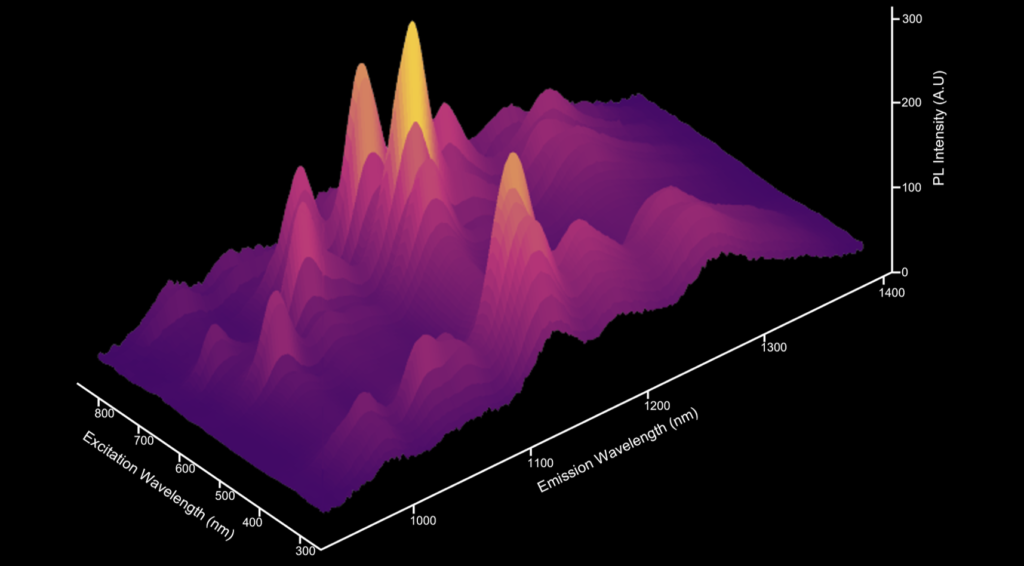Welcome to Edinburgh Instruments monthly blog celebrating our work in Raman, Photoluminescence, and Fluorescence Lifetime Imaging. Every month we will highlight our pick for Map of the Month to show how our spectrometers can be used to reveal all the hidden secrets in your samples.
Single-wall carbon nanotubes (SWCNTs) have unique electrical, thermal, mechanical, and optical properties which make them attractive for a wide variety of applications; ranging from drug delivery to battery electrodes.

Figure 1: Roll-up vector of SWCNTs and chiral indexes. Blue chiral indexes have semiconducting properties while the orange are metallic.
SWCNTs are interesting because their electronic properties heavily depend on the chiral index of the tube structure. SWCNTs with chiral indexes coloured in orange in Figure 1 exhibit metallic properties while those in blue are semiconducting, with the bandgap varying with chiral index. This gives SWCNTs a wealth of tunability and their properties can be tailored to specific applications. One of the most powerful methods for SWCNT identification is photoluminescence spectroscopy.

Figure 2 Excitation Emission Map of SWCNT Sample
A SWCNT sample contains a multitude of tube structures with different chiral indexes and therefore different bandgaps. To full characterise the photoluminescence properties of all the semiconducting SWCNTs present an EEM is needed. An FLS1000 Spectrometer equipped with an InGaAs NIR was used to produce an Excitation Emission Map (EEM), Figure 2. We can now identify the chiral structures present in the SWCNT sample. Read the full application note: Rapid Excitation Emission Matrix Analysis of Single Wall Carbon Nanotubes to find out more on how we can carry out this analysis on the FLS1000.

No results found.
No results found.